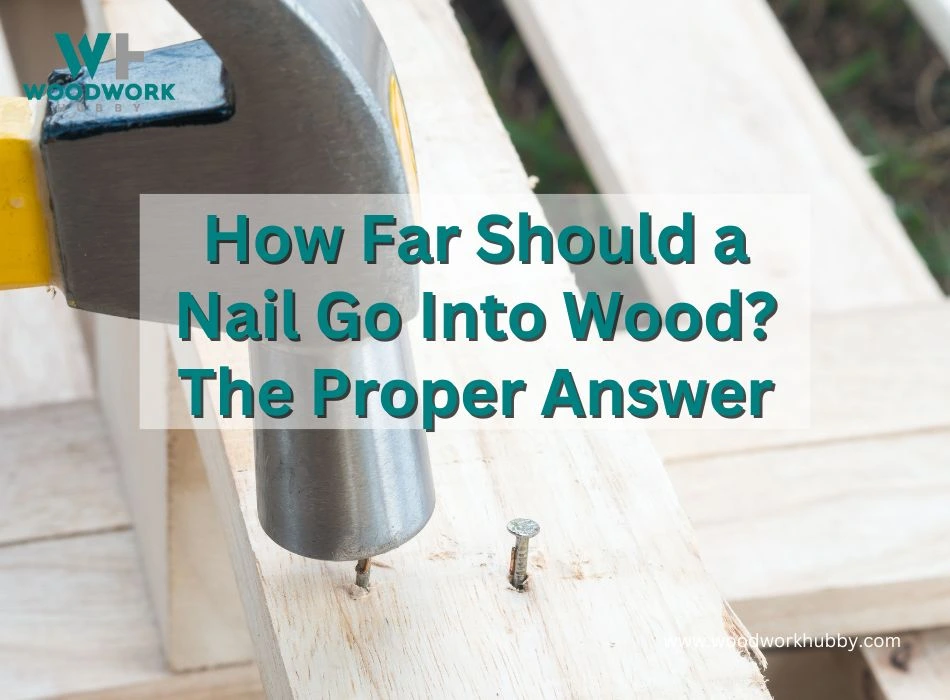A friend asked me a few weeks back what length nail to use when nailing 2 pieces of wood together. To my surprise, he had been using nails that were way too short for the job at hand. So, how far should a nail go into wood?
As a general rule, the nail length needs to be 2.5 – 3 times the thickness of the top piece of wood the nail is going through. For a 1 inch (25mm) thick material, the nail should be 2.5 – 3 inches (62-75mm) long to ensure an adequate hold.
Now keep in mind this should be adhered to if the nail ever stands a chance of holding its self into the wood fibers. This length is a general guide and you may slightly alter this depending on the type of wood you are nailing into.
I will go further into why this is below, as well as some helpful other information to help you get a strong hold with your nails.
How Far Should Nails Penetrate?
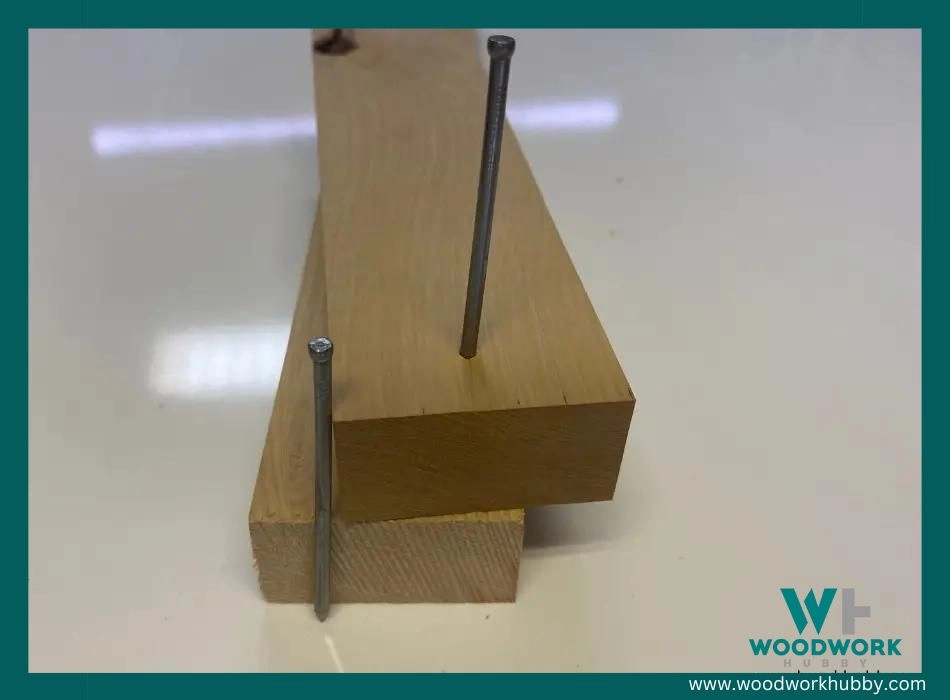
Generally, a nail should penetrate the wood no less than 2.5 – 3 times the thickness of the top piece of wood the nail went through.
Now this will vary slightly and here is why. If you intend to nail a 1/4 inch (6mm) backing on a bookshelf, a perfectly accepted nail for this could be 1.6 inches (40mm). Now, this is way longer than 3 times the backing thickness although this is fine as you should really only be concerned with the nail being too short. not too long.
Use extra nails to help stop wood racking. Find out what racking is by reading my article.
If you applied the 2.5 rule, your nail would be less than 5/8 inch or (15mm). Seems way too short for this task and most likely is. This is why it’s better to have a nail that is too long rather than too short.
See my handy chart below which will help with choosing your nail size.
A longer nail is much better than one that is too short!!
| Primary Wood Thickness | Length of Nail Required (Approx) |
|---|---|
| 1/2″ (12mm) | 1 3/16″ (30mm) |
| 3/4″ (19mm) | 1 3/4″ (45mm) |
| 1″ (25mm) | 2 1/2″ (62.5mm) |
| 1 1/4″ (30mm) | 3″ (75mm) |
| 1 3/4″ (45mm) | 4 1/2″ (112mm) |
How Does a Nail Hold Wood Together?
Nails push the wood fibers downward which act as a clamp and create friction against the shaft of the nail. These downward-pointing wood fibers are what hold a nail in place and keep the wood together.
To remove the nail, the wood fibers have to be bent upward, which makes it difficult to remove the nail.
This is why any hardwoods require a pilot hole before nailing. The wood fibers are so densely packed, that making room for a nail will simply result in cracking the wood.
Check out my articles which explain what is a clearance hole and what size pilot hole should I drill.
How Far Should a Nail Go Into a Stud?
As a general rule, the nail should penetrate into a stud the same length as the thickness of the material the nail is going through. This ensures the nail can adequately hold into the wood fibers.
In some cases, this may not be possible as you will be dealing with a HUGE nail. The table below will give you some guidance. Please remember these lengths are not a must although use a nail that is close or your best judgment.
| Situation | Nail length |
|---|---|
| 2-inch thick top plate into the end grain of studs | 4 Inches (100mm) |
| 1/2 Inch (12mm) thick Sheetrock or Gyprock into studs | 1 inch (25mm) |
| 3/4 inch (19mm) moldings such as skirting or architraves | 2 inch (50mm) |
The problem with nailing into the end grain of studs is end grain is not great at holding nails. In this situation, I highly recommend using longer nails just to be on the safe side.
How Far Into The Surface of the Wood Should a Nail Go?
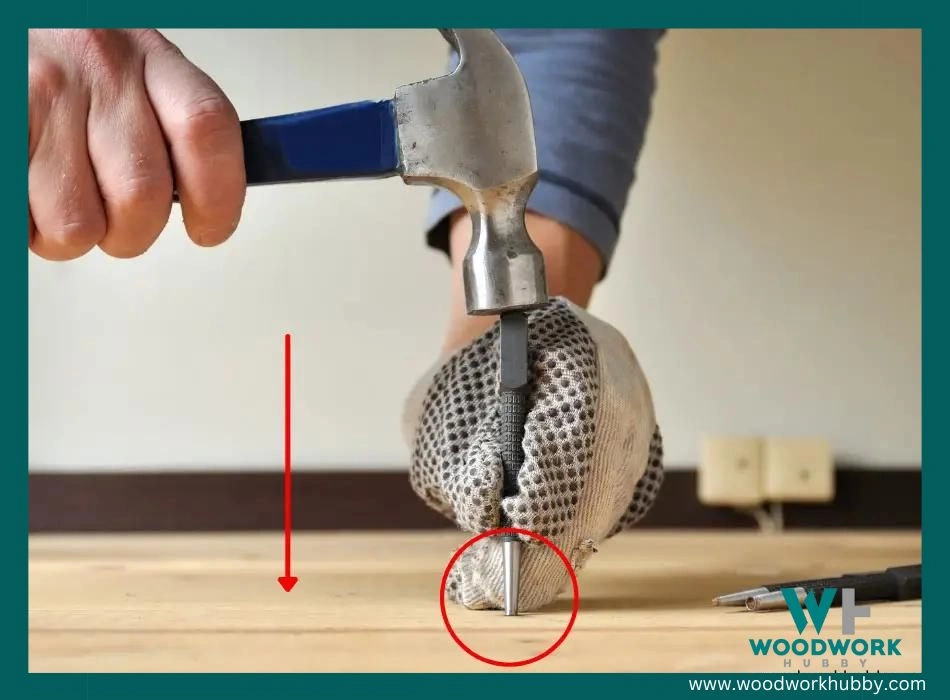
So you may not be asking how long a nail should be but how deep a nail should be punched into the surface of the wood.
A nailhead should be punched into the wood no more than 1/8 inch (3mm) below the finished surface of the wood. This applies to bullet head nails and allows for the putty to seat properly in the hole.
Punching the head of a nail to this depth allows for expansion and contraction of the surface of the wood so the nail head does not sit proud, and catch on furniture or someone’s feet.
Of course, if you intend on filling the nail holes, this depth gives the putty plenty of room to bite into so it does not fall out.
Once again, this is a general guide as most people will just seat the nail just below the surface of the wood. This rule will depend a lot on the project you are building and also the thickness of the wood.
How Far From the End of the Wood Should You Nail?
A nail should be no closer to the end of a board than the thickness of the board itself, provided that the nail does need to line up with the center of the wood below it that the nail is going into.
So as long as you don’t need a special position for your nail, a good practice is to keep the nail at least the thickness of the board back from the edge.
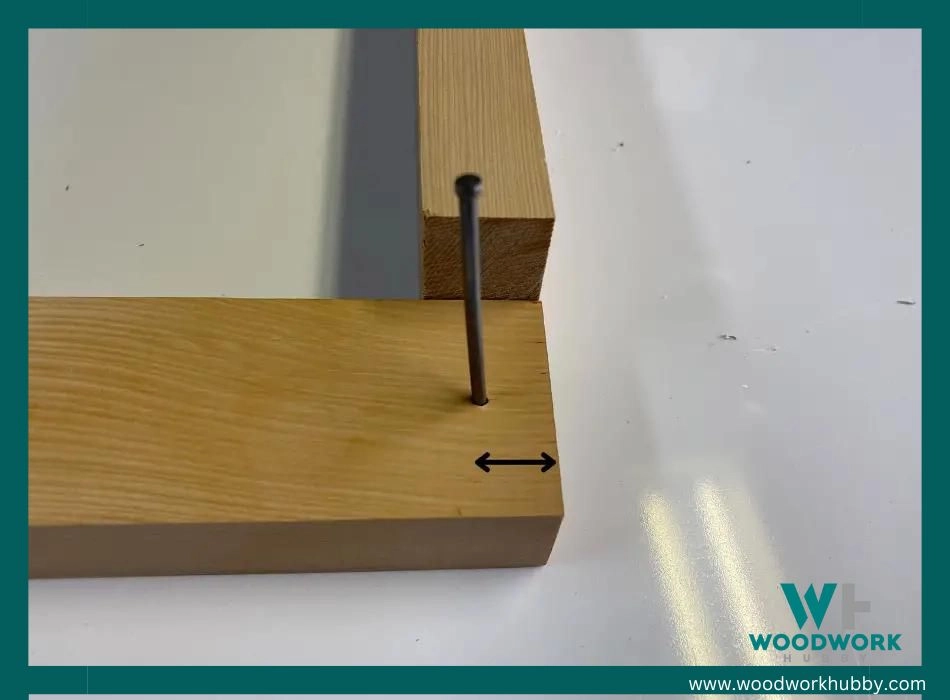
For example, if you are nailing through wood that is 3/4″ (19mm) thick, the nail should be back from the edge around 3/4″ (19mm). I often find this is one of the main problems for people with splitting the wood, which is they try to drive the nail in too close to the end of the wood.
Now there will be exceptions to this rule, but it is a good one to know. If you need to nail close to the end in a piece of hardwood, be sure to check out my article on drilling a pilot hole to prevent this splitting.
Splitting is very common, especially in MDF. See my article on how to prevent MDF from splitting when screwing.
How to Nail Wood Without Splitting it – Works everytime!
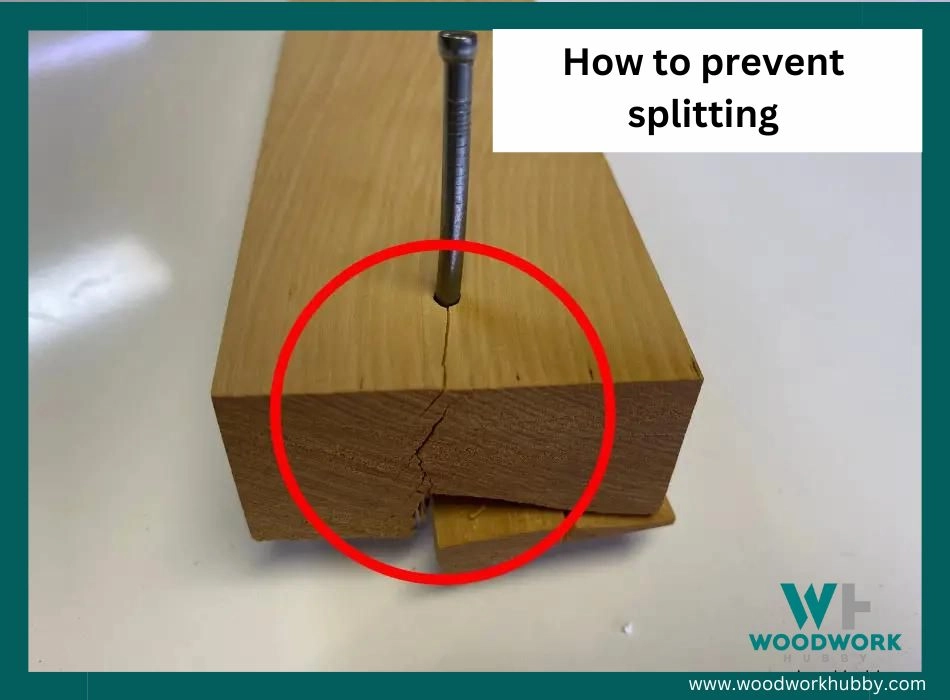
Blunten the end of your nail by hitting the point with a hammer. The blunt end of the nail will act as a punch and push the wood fibers through rather than spreading them which causes splitting.
Here is how to do it:
- Place the head of your nail onto the concrete floor or another hard surface
- Tap the pointed end of the nail a few times with a hammer to form a flat spot on the nail
- When you drive the nail into the wood, it will now tend to push the wood fibers through, rather than spreading them apart.
I have found this to work 99% of the time but of course, it will depend on the wood species you are using. Give it a go! Failing this, you can always resort to drilling a pilot hole which is the proper way to do it.
Final Thoughts – How Far Should a Nail Penetrate?
As a general rule of thumb, a nail should penetrate the wood at least the same amount as the wood thickness getting nailed.
The importance of this is to allow the nail as much length as possible for the wood fibers to grab onto. It is this friction between the wood fibers and the shank of the nail, that provides the holding power.
If you use a nail that is too short, the chance for a nail to hold in the wood long-term is diminished. I hope this article helped clear this topic up for you.
As I always say; If a job is worth doing, it’s worth overdoing!

